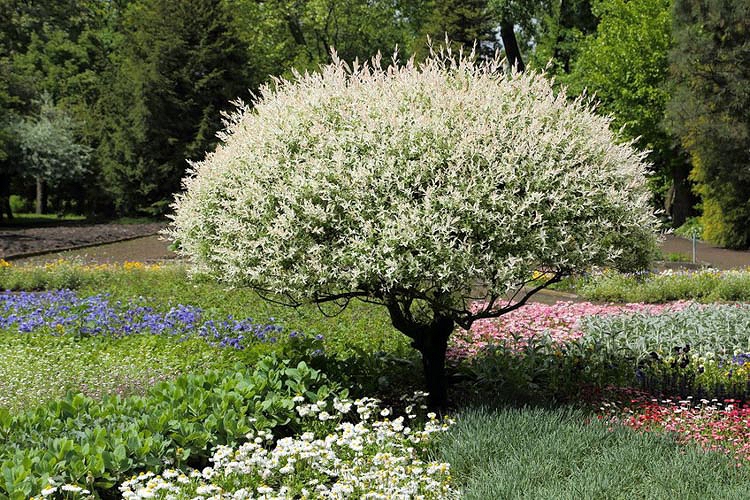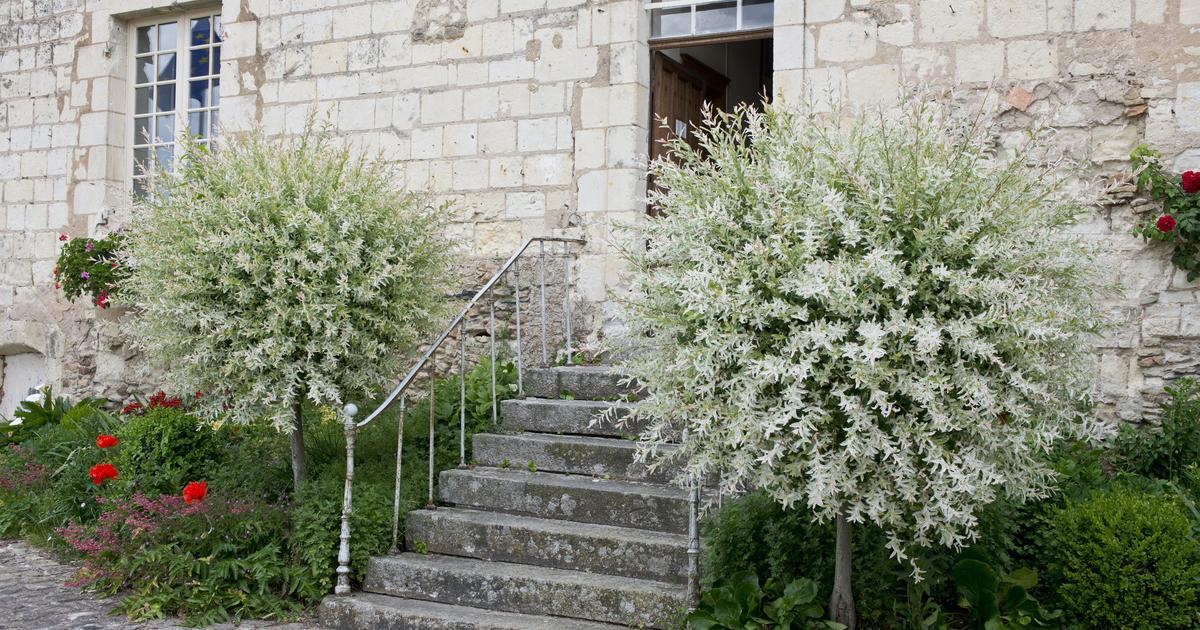If you’re looking to add more than just a bit of color to your garden (three, in fact), the dappled willow tree is a perfect and unique addition to any landscape. “Stunning” isn’t even enough to describe this small yet lovely tree with her gracefully arched branches. Apart from its branches, its leaves astound gardeners and homeowners whenever it shifts from a lustrous pale pink to a white-like green.
Willow trees are already known for their gracefully draped branches and elegant leaves. The tri-colored dappled willow tree and its shrubs take the effect to the next level with its color-changing effect and visually appealing stems (that turn coral red during the winter season).
The dappled willow tree is a stunning addition to any property, whether big or small. It can also contribute to creating a healthy home. But before you go and plant one in your garden, it’s best to learn more about this weeping willow first.
Meet the Dappled Willow Tree
The dappled willow is also known as the tri-colored willow or variegated willow because of its striking pink stems, which are surrounded by unique foliage with branches colored in green, white and pink. A delightful garden accent, the graceful dappled willow shrub can also make a lovely hedge or a great impact statement, depending on how you prune it.
How tall does a dappled willow tree get? Dappled willows are fast-growing trees. They can grow at a rate of two to three feet yearly, achieving their maximum growth of 10 feet in just a few years. Once the tree reaches its maximum height, it achieves a lovely rounded shape that works well as a hedge (if you plant it in a row). Can you keep them small? Yes, dappled trees can stay small.
Specifications

The United States Department of Agriculture (USDA) Hardiness Zones indicate the places where plants can reach their ideal growth. This willow tree is hardy from USDA Zones 4 to 9, which means it can thrive in gardens in the North and Midwest. Also, there’s no need to winterize your dappled willow shrubs or design the garden to survive the cold.
Planting and Growing the Dappled Willow Tree
If you want to plant a dappled willow tree in your garden, plant them in early spring or mid-to-late fall or early spring. Both seasons guarantee air temperature and warm soil — important factors in dappled willow tree planting.
Location
In terms of location, go for an area that has plenty of sun. Areas with partial shade will work but places with full sun can yield more vibrant colors. The more sun the tree gets, the more vibrant the color of the leaves and stems. Dappled willow trees need full sunlight, or at least
Soil texture
Whether you choose a partial shade or full sun, always prioritize the soil texture. Dappled willow trees thrive in slightly acidic soil conditions, with the pH ranging between 5 and 7. While these colorful shrubs grow well in moist soil, it doesn’t grow well in standing water. Dappled willows only thrive in moist, well-draining soil.
Planting
When planting the tree, dig a hole that’s an inch shallower than the tree’s root ball height and twice the size of its root ball. Plant the tree in the hole before filling it with soil. Next, add a three-inch layer of mulch around the tree.
Pests and diseases
In terms of pests and disease, the most common ones that affect dappled willow trees are spider mites, caterpillars and mildew. Since this tree is a forgiving plant, most gardeners just prune infected stems and destroy them.
Anthracnose diseases, which are often caused by fungi, often develop during the dappled willow’s growing season. This disease causes the leaves to drop, as well as trigger recurrent attacks that are detrimental to the tree. So if you see signs of an infection, dispose and remove the affected parts.
Finally, it’s not necessary to encourage growth, but dappled willows respond well to pruning. Regular pruning encourages more vibrant leaf colors since it encourages plant growth. If you want to prune your shrubs, you can cut up to a third of the branches and it won’t impact the root system. Schedule your pruning in late winter.
What are the Common Problems of Dappled Willow Trees?

Although dappled willow trees are often unproblematic, you may occasionally see problems. For examples, willows are shrubs and trees known for their catkin type seeds, which make them susceptible to the following diseases:
Willow scab disease
This disease is often caused by the fungus Venturia salciperda. Scabs on willow trees do not seriously harm the tree but it does leave dark spots on the leaves. These spots can cause the leaves to shrivel, wilt and die. To prevent the fungus from affecting the rest of the tree, trim out the infected parts of the tree and keep your willow trees healthy with regular fertilizer and sufficient irrigation.
Plant rust
Rust in plants generally refers to a family of fungi attacking the plants, especially the leaves. The disease can be characterized by the rust color on the willow tree’s stems and leaves. The rust fungi, which start as flecks, eventually grow into bumps.
Prevention is always the best defense against rust. Since rust thrives in a wet environment, avoid overwatering your plants. Also, good air circulation keeps your plants dry, which prevents the formation of rust.
If your plant does rust, remove the affected stems and leaves at the first sign of a rust color. The faster you can remove the affected leaves, the better are your plant’s chances at survival. Refrain from composting these leaves. Dispose of them immediately.
Crown gall
Willow trees with crown gall are infected with called galls and swollen knots near the crown. In some cases, on the twigs and roots, too. The galls are initially spongy in texture and tan in color, but they eventually turn a darker color and harden. As the disease progresses, the gall encircles the branches and the trunks, cutting off the tree’s sap flow (which is vital to the plant).
The best course of action for crown fall is to remove the infected plant. Bacteria stay on the soil for two years after the removal of the plant, so refrain from planting a new one in the area until the bacteria die out.
Why Should You Plant a Dappled Willow Tree?
There’s more to this gorgeous willow tree than what meets the eye. Apart from being an aesthetic addition to any home or garden, the dappled willow offers two benefits:
- Useful plants. Willows are easily propagated from cuttings. Gardeners can increase the number of dappled willow trees by taking these hardwood cuttings. Later in the winter season, they plant these cuttings by placing them in pots of damp soil. Six weeks later, new roots will appear. Since these plants are lightweight, strong and flexible, they are perfect materials for baskets. The flexible stems are also excellent for rustic furniture, while the willow pulp can be made into paper. Willow trees are also rich in salicylic acid, which is a valuable ingredient for skincare products.
- Improve your property. Whether you use the dappled willow tree as a standalone tree or a hedge, their lacy and light appearance can brighten up any property. If you want to use the tree as a hedge, plant the trees about three feet apart so they can fill in the spaces nicely in three seasons.
- Low maintenance plants. Dappled willows, as mentioned above, are easy to propagate. They are quite forgiving, too. Most dapple willow trees just need the right amount of sun, water and air.
The dappled willow tree is a lovely addition to any property. In fact, it can change the look of your home. Unlike other plants, it doesn’t take much to plant and grow this colorful plant. As long as you have the patience and determination, you’ll see colorful results sooner than you think.

